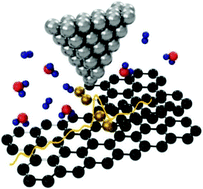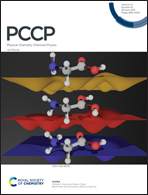Monitoring the active sites for the hydrogen evolution reaction at model carbon surfaces†
Abstract
Carbon is ubiquitous as an electrode material in electrochemical energy conversion devices. If used as a support material, the evolution of H2 is undesired on carbon. However, recently, carbon-based materials have aroused significant interest as economic and eco-conscious alternatives to noble metal catalysts. The targeted design of improved carbon electrode materials requires atomic scale insight into the structure of the sites that catalyse H2 evolution. This work shows that electrochemical scanning tunnelling microscopy under reaction conditions (n-EC-STM) can be used to monitor the active sites of highly oriented pyrolytic graphite for the hydrogen evolution reaction. With down to atomic resolution, the most active sites in acidic medium are pinpointed near edge sites and defects, whereas the basal planes remain inactive. Density functional theory calculations support these findings and reveal that only specific defects on graphite are active. Motivated by these results, the extensive usage of n-EC-STM on doped carbon-based materials is encouraged to locate their active sites and guide the synthesis of enhanced electrocatalysts.

- This article is part of the themed collection: PCCP Emerging Investigator Lectureship Award Winners


 Please wait while we load your content...
Please wait while we load your content...